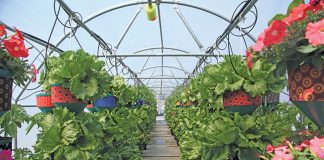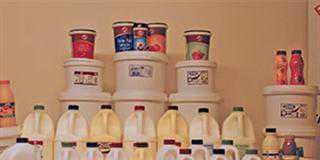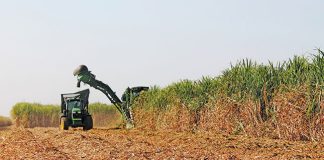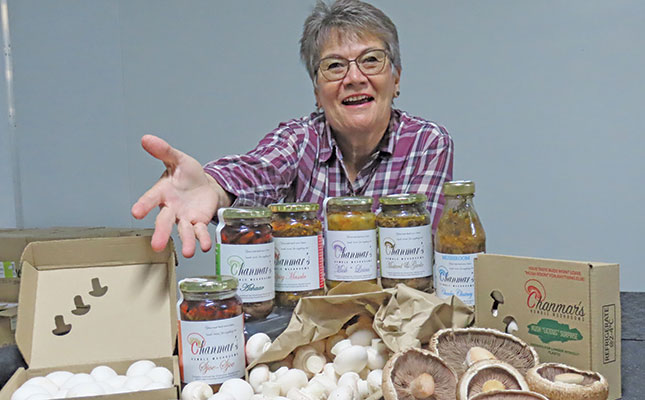
Photo: Supplied
Marietjie Kruger is passionate about fungi, and one species of fungi in particular, namely Agaricus bisporus, commonly known as the button mushroom. Kruger, owner of Chanmar’s Humble Mushrooms near Heidelberg in Gauteng, describes mushrooms as one of the wonders of the world.
“All mushrooms are fungi, but not all fungi are mushrooms. A. bisporus is, for us humans, an important part of the edible mushroom family. It belongs to the division Basidiomycota of the kingdom Fungi, and is the familiar white mushroom found in supermarkets,” she explains.
After starting to grow mushrooms in Limpopo’s Waterberg region in 2003, Kruger moved her production operation to Heidelberg in 2015.
The business is named after her daughters Chantell and Marlize, whom she describes as her “pillars of strength”.
Button mushrooms comprise 80% of her crop and brown mushrooms make up the rest. She sells the fresh, prepacked mushrooms in Gauteng, with 25% to 30% of production earmarked for the catering industry. In 2007, Kruger also branched out into the condiment and preserve market with a range of bottled products, including mushroom chutney, atchar and preserved garlic and mushrooms.
Quality compost essential
The basis of successful mushroom production is top-quality compost, and this comes from top-quality straw, says Kruger. Producing compost takes about five weeks.
She uses irrigated wheat straw, because of the flexibility of its stalks and its capacity to retain moisture. The straw, mixed with chicken litter and gypsum, forms the basis of her compost production process.
“The compost goodie-pit, as I like to call it, is one of the building blocks of compost manufacturing. This is a cavity in the floor of the area where the straw and compost are kept and where all the run- off water is collected. The enriched water, which is reused on new straw batches, helps to break down the straw within a week,” she says.
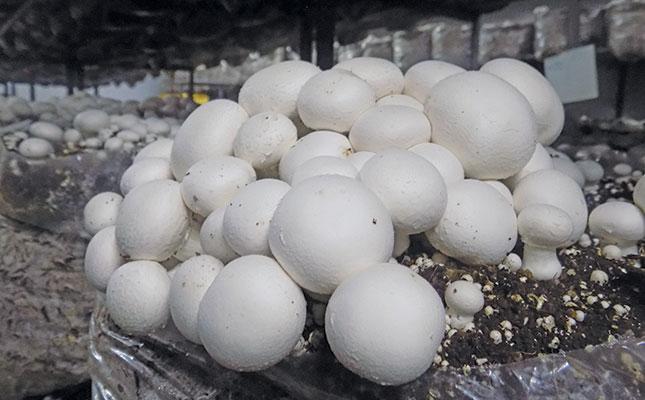
Kruger sources chicken litter from a chicken business. According to her, chicken litter is a relatively inexpensive source of nitrogen and is also high in nutrients such as phosphorus, potassium, calcium and magnesium.
The litter also contains many micro-organisms, such as actinomycetes, clostridia and bacilli. The litter is tested regularly to ensure a nitrogen content of between 3,8% and 4,5%.
The balance between the litter and the straw is crucial to producing a good crop. Gypsum is added to regulate both the pH level and the permeability of the straw and litter mixture. This is perhaps the most important additive required for consistent compost quality, says Kruger.
It binds fatty substances in the compost, lowers sensitivity to ammonia at the moment of inoculation, and buffers oxalic acid during growth. (Inoculation involves bringing the spawn into contact with the substrate to initiate growth.)
Kruger assesses the compost daily to make sure that the correct temperature, moisture levels, air flow and water requirements are maintained. She adds that attention to detail like this is necessary to produce top-quality compost.
“After a pre-wetting period of seven days, the straw is broken up and divided into windrows. It’s kept on a slanted floor, so that all the run-off water can collect in the goodie-pit.”
Seven days after watering the straw, the first 30% of the litter and all of the gypsum required are added, and the mixture is kept at a temperature of 60°C so that it can amalgamate properly. Every batch of litter is tested and analysed in a laboratory; this makes it possible for Kruger to determine exactly how much litter is needed for every compost-manufacturing cycle. The mixture is turned over and aerated daily to prevent the temperature from spiking too high.
After five days, Kruger mixes in the last batch of chicken litter and the compost is then ready for the next stage: it is moved into a bunker system, where it is exposed to oxygen-rich air for 13 days. The compost is normally removed from the bunkers at two- to three-day intervals, allowing for additional mixing.
Exact timing
“This phase calls for painstaking timing,” explains Kruger. “Air is blown through the bunker for three minutes at 12-minute intervals, and this is controlled by an electronic timer. During this stage, the temperature goes up to between 80°C and 86°C. The compost is turned every second or third day if the temperature goes down too low. At this stage, water is only added during the turning process. The objective is to maintain a moisture content of 70%.”
During the so-called sweat-out stage, the compost is moved to an aerated, isolated pasteurising tunnel for a week. On the first day, the temperature is kept at 48°C. The following day it is also kept at 48°C, but with limited fresh air.
After two days in the tunnel, the compost is allowed to heat up to 58°C, where it is kept for eight hours to pasteurise the compost. The temperature is then brought back to 48°C.
After six days, the compost is tested to make sure the batch is free of ammonia, and the temperature is returned to 23°C in preparation for spawning.
Spawn plus compost
“The real magic starts when the spawn is added to the compost. Spawn is the carrier that holds a specific strain of mushroom mycelium in stasis until you’re ready to transfer it into another substrate, such as compost. The spawn is added to compost bags of 30ℓ each as soon as the compost has cooled down,” Kruger continues.
The bags with spawn are moved to growing chambers where the mixture is compacted. Here, the temperature is pushed up to 24°C, and the bags are left for two weeks for the mycelium [spawn] to penetrate the compost during this period.
After two weeks in the growing chamber, a 5cm layer of wet peat is added on top of the spawn and compost mixture to act as a moisture reservoir. The bags are kept at a constant room temperature of 22°C while the temperature inside the bags is regulated at 24°C for the next eight days. The humidity in the room is kept at 95%.
Pinning
‘Pinning’ is the beginning of the fruiting process, when the mushrooms appear as tiny pinheads. After the spawn is added to the compost, hyphae, the hair-like filaments that make up mycelium, start to form strands and eventually bunch together to form hyphal knots. These knots then develop into baby mushrooms, called mushroom pins. The mycelium then begin to fruit and produce mature mushrooms. It takes about 32 days from spawning to the first harvest.
Four-day harvest
Once the mushrooms are fully mature, harvesting takes place over four days. The process is repeated during the following four- day period using the same bags. It usually takes four four-day cycles to complete the harvest.
About 35% of the harvest is gathered during the first crop cycle. The mushrooms are harvested every morning and afternoon, as mushrooms have the ability to double in size every 24 hours, allowing for picking twice a day.
According to Kruger, hygiene in any mushroom production facility is of supreme importance. It is the first line of defence against contamination and is central to long-term sustainability and profitability. From the arrival of the very first batch of straw until the packed products leave the premises, the highest possible hygiene standards are maintained.
She says the strict sanitary rules and regulations that were enforced during the COVID-19 pandemic was nothing new to the Chanmar’s team. Ongoing disinfection and sanitation have become second nature to them. As part of the hygiene regime at Chanmar’s, everybody is required to disinfect their shoes and hands upon entering any part of the operation.
Exact science
“Mushroom production is an exact science, and without ongoing and hands-on management, a grower would be hard-pressed to run a sustainable business. The ideal Chanmar button mushroom has a diameter similar to that of a R5 coin and weighs about 25g. A mushroom like this received enough water at the right time and was kept in conditions that were exactly right.
“This was coupled with the correct nutrition gained from successful compost manufacturing. It’s a demanding business and detailed record-keeping of all the different aspects of the production process is vital,” says Kruger.
She adds that given the economic realities of farming in South Africa, producers have no choice but to add value on as many levels as possible. Apart from the bottled product range, Chanmar’s also markets the spent mushroom compost as a slow-release organic plant fertiliser. The compost is sold in bags for gardeners, but is also available by the truckload for the landscaping industry.
Phone Marietjie Kruger on 073 8241 684, or email her at [email protected].











